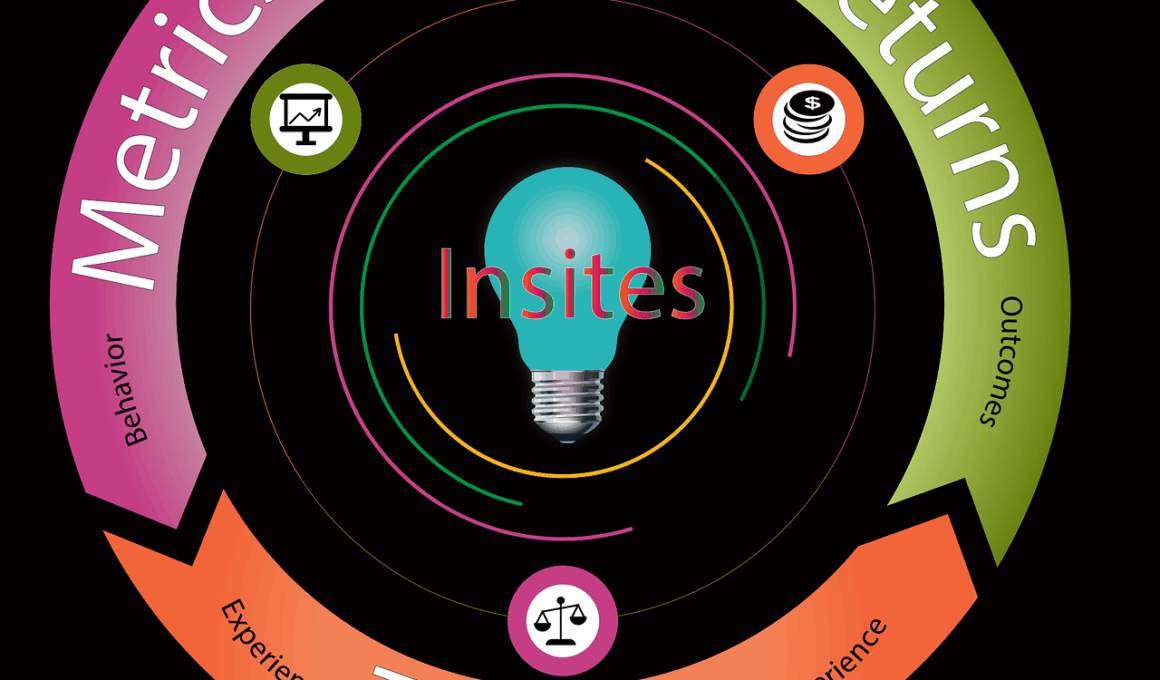Enhancing Multi-Channel Marketing with Integrated Web Analytics
In the rapidly evolving landscape of digital marketing, businesses are increasingly relying on data-driven strategies to enhance their multi-channel marketing efforts. Integrated web analytics serve as a cornerstone in this approach, providing invaluable insights into customer behaviors and preferences across various platforms. With the ability to collect and analyze data from websites, email campaigns, social media, and mobile apps, businesses can gain a comprehensive view of their marketing effectiveness. Effective web analytics utilize tools such as Google Analytics to track website traffic and user engagement. By analyzing this data, marketers can identify which channels are most successful at driving conversions. Enhanced reporting capabilities allow for better decision-making, ensuring that marketing resources are allocated efficiently. Moreover, segmenting data by demographics or user behavior can optimize marketing strategies and enhance customer experiences. By understanding what content resonates with different audiences, businesses can tailor their messages and offers accordingly. Ultimately, the integration of web analytics into multi-channel marketing not only improves campaign effectiveness but also provides a competitive edge in today’s data-centric market.
The Importance of Integrated Web Analytics
Integrated web analytics is crucial for businesses aiming to achieve a cohesive marketing strategy across different channels. By harnessing data from multiple sources—like social media, email, and online ads—companies can gather a holistic view of consumer behavior. This enables practitioners to identify trends and make informed decisions that enhance customer engagement. Integrated analytics also help marketers understand the customer journey better. For instance, analyzing how users navigate from social media to a website can reveal insights about their interests and motivations. Additionally, by tracking conversion rates across platforms, marketers can assess the effectiveness of various campaigns. This approach allows the optimization of budget allocation to focus on the most effective channels, increasing overall ROI. Furthermore, integrated analytics empower businesses with real-time data, which can be pivotal for timely decision-making. Marketers can quickly iterate and adjust campaign strategies based on performance metrics. Utilizing a combination of qualitative and quantitative data provides a more enriched understanding of the audience, driving successful marketing initiatives tailored to user preferences.
The role of user segmentation in web analytics cannot be overstated. By categorizing users based on demographics, behavior, or interests, businesses can refine their marketing messages. This targeting increases the likelihood of conversion by ensuring relevant content reaches the right audience. For instance, a retail brand can segment users into groups such as new visitors, returning customers, and cart abandoners. This personalization enhances user experience and fosters brand loyalty. Additionally, user segmentation allows for A/B testing, where different messages or designs are tested on various segments to identify the most effective approach. This method not only improves engagement but also maximizes marketing budgets by focusing efforts where they will yield the highest returns. Furthermore, engaging and retaining users becomes easier when tailored content meets their needs and preferences. Implementing tools that enhance segmentation capabilities is imperative for success. Marketers should continuously analyze performance data to identify new segments and adapt to changing customer behaviors. By leveraging these insights, brands can achieve clearer communication that resonates with their audience, ultimately driving deeper connections and better marketing results.
Leveraging Data for Better Decision-Making
Data-driven marketing relies heavily on accurate and actionable insights derived from web analytics. Businesses can greatly improve their decision-making process by focusing on key performance indicators (KPIs). Identifying and monitoring KPIs allows marketers to gauge campaign success effectively. For example, metrics such as bounce rates, session duration, and conversion rates can signal how well an audience engages with content. By leveraging these statistics, marketers can modify offerings and messaging in real-time to enhance customer experiences. Furthermore, historical data analysis can inform future campaign strategies, allowing marketers to reference successful tactics that previously generated positive results. This iterative approach to marketing, driven by data, reduces the likelihood of costly mistakes based on assumptions. It empowers teams to make informed predictions about consumer behavior and market trends. Additionally, integrating Artificial Intelligence and machine learning algorithms can enhance predictive analytics, offering deeper insights into future outcomes. By employing such sophisticated tools, businesses can remain agile in a competitive landscape while continually optimizing their multi-channel marketing efforts.
The effectiveness of multi-channel marketing strategies hinges on a brand’s ability to create a seamless customer experience. Integrated web analytics plays a significant role in achieving this goal. When businesses utilize analytics to understand user interactions across channels, they can determine optimal touchpoints for engagement. This knowledge allows marketers to craft consistent messages and offers that resonate with their target audiences. For instance, ensuring that social media promotions align with email campaigns enhances overall brand coherence. As customers navigate across platforms, maintaining a consistent narrative reinforces brand identity and trust. Moreover, customer journey mapping, fueled by insights from web analytics, helps identify potential friction points in the purchasing process. Recognizing where users drop off enables marketers to rectify these issues proactively. By integrating customer feedback and data, businesses can refine their strategies for higher conversion rates. Ultimately, a seamless and integrated approach ensures that customers feel valued and understood, fostering loyalty. Thus, the integration of analytics into multi-channel marketing is essential for creating campaigns that speak directly to consumers in a coherent and engaging manner.
Measuring Success and Continuous Improvement
Tracking ROI is vital to understanding the effectiveness of multi-channel marketing efforts through integrated web analytics. After deploying campaigns, continuous measurement is essential to assess their impact accurately. Businesses can utilize various analytic tools to gain insights into engagement metrics and revenue generated from different channels. This demonstrates which strategies yield the highest returns on investment. For example, if a certain campaign had high traffic but low conversions, it may indicate a need for adjustment. By employing A/B testing and analyzing results, companies can iterate and improve their marketing strategies. Furthermore, measuring customer feedback through surveys and social listening allows brands to identify areas for improvement. This approach is proactive and enables marketers to implement necessary changes before potential issues escalate. Additionally, maintaining clear and transparent reporting supports alignment among stakeholders. Teams can share key findings effectively, ensuring everyone understands performance goals. Through continuous improvement based on comprehensive data analysis, organizations can achieve sustained growth and better connect with their audiences across multiple channels.
In conclusion, integrated web analytics serve as a catalyst for successful multi-channel marketing. By focusing on data-driven insights, marketers can enhance their strategies across various platforms, leading to improved customer experiences and engagement. Utilizing user segmentation, measurable KPIs, and real-time data effectively drives decision-making processes, ensuring campaigns are tailored to meet specific audience needs. As businesses continue to navigate through the complexities of digital marketing, adopting an integrated approach to analytics becomes increasingly essential. This not only facilitates a seamless customer journey but also bolsters brand trust and loyalty. Furthermore, analyzing past performance paired with future predictions empowers organizations to stay one step ahead in the competitive landscape. As the argument for the evolving nature of marketing continues, further exploration of web analytics will remain paramount. The final goal is to create marketing experiences that resonate, engage, and convert audiences. Leveraging integrated analytics aligns a brand’s objectives with customer expectations, ultimately driving success in the fast-paced digital environment.


